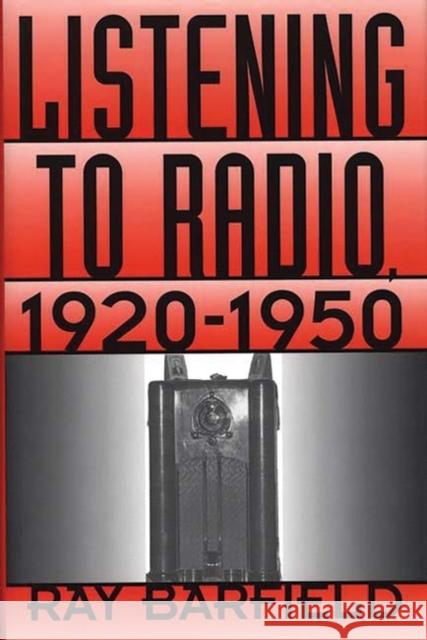Listening to Radio, 1920-1950 » książka
Listening to Radio, 1920-1950
ISBN-13: 9780275954925 / Angielski / Twarda / 1996 / 248 str.
Ray Barfield has done something quite new in media studies. Rather than trace the history of radio through the usual route, he has sought out a body of oral history from those who grew up with and listened to radio. He has not only collated the responses of his informants but placed their comments in a larger cultural and historical context and thus provided a kind of history from the ground up. He demonstrates thereby just how important and influential radio was in the lives of ordinary Americans. General readers and scholars alike will learn something from Barfield's engaging narrative about why radio was once such a compelling force in our culture. (From the "Foreword" by Thomas Inge.) This fresh and engaging account of early radio's contributions to U.S. social and cultural life brings together varied perspectives of listeners who recall the programs that delighted and entranced them. The first electronic medium to enter the home, radio is examined as a chief purveyor of family entertainment and as a bridge across regional differences. Barfield draws from over 150 accounts, providing a forum and a context for listeners of early radio to share their memories from their first impressions of that magical box to favorite shows. Opening chapters trace the changing perceptions of radio as a guest or an invader in U.S. homes during the exuberant 1920s, the cash-scarce 1930s, and the rapidly changing World War II and post-war years. Later chapters offer listener responses to every major program type, including news reporting and commentary, sportscasts, drama, comedy series, crime and terror shows, educational and cultural programs, children's adventure series, soap operas, audience participation shows, and musical presentations.
This fresh and engaging account of early radio's contributions to U.S. social and cultural life brings together varied perspectives of listeners who recall the programs that delighted and entranced them. The first electronic medium to enter the home, radio is examined as a chief purveyor of family entertainment and as a bridge across regional differences. Barfield draws from over 150 accounts, providing a forum and a context for listeners of early radio to share their memories from their first impressions of that magical box to favorite shows.
Opening chapters trace the changing perceptions of radio as a guest or an invader in U.S. homes during the exuberant 1920s, the cash-scarce 1930s, and the rapidly changing World War II and post-war years. Later chapters offer listener responses to every major program type, including news reporting and commentary, sportscasts, drama, comedy series, crime and terror shows, educational and cultural programs, children's adventure series, soap operas, audience participation shows, and musical presentations."











